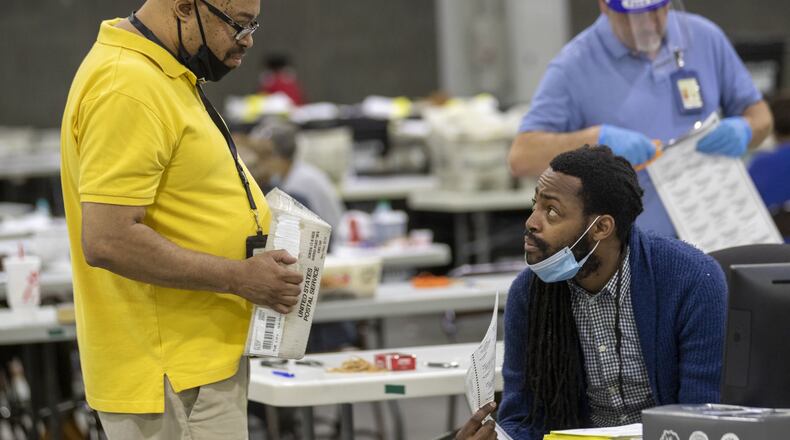The State Election Board passed a rule Tuesday that sets thresholds for how scanners count absentee ballots in Georgia, discarding votes that fill in less than 10% of an oval.
The rule means that votes marked as check marks or X’s outside ovals won’t necessarily be recorded.
Opponents of the rule, which passed 3-1, said election officials should count all votes where intent is clear.
But the State Election Board’s majority said all legible votes will be counted, and there needs to be a standard so votes are clearly defined and review panels aren’t overwhelmed with ambiguous marks.
The decision on what counts as a vote comes after mismarked or lightly marked ballots didn’t register on ballot scanners in at least five counties after the June 9 primary, leaving bipartisan panels to go through them one by one to determine voters' intent.
The board also approved a rule clarifying absentee ballot instructions so they tell voters to completely fill in empty ovals.
“At some point the voter has to follow the instructions to a certain level,” said Matt Mashburn, a member of the State Election Board and a Republican poll watcher. “These rules are working very, very hard to bend as far as they can.”
Board member David Worley, a Democratic Party appointee, said he opposed the rule because it could result in votes being thrown out.
“There are going to be votes that are not counted where the intent of the voter is nonetheless clear. I’m concerned about that,” Worley said.
The rule overrides the default settings on Georgia optical scanners, a component of the state’s new voting system.
Election officials must change the settings so that ovals that are at least 20% filled will always be counted, and ovals filled less than 10% won’t be, according to the rule. Ovals between those thresholds will be manually reviewed. The factory settings on the scanners discarded ballots with less than 12% of the oval filled and always counted those that were over 35% completed.
Joy Wasson, a DeKalb County voter, said during the public comment portion of the board’s meeting that optical scanners can be inconsistent when reading voter marks, and election officials shouldn’t defer to them.
“A citizen’s vote should never be discarded because a specific instance of scanning their ballot failed to adequately read their intent due to circumstances outside their control,” Wasson said.
But an attorney for the secretary of state’s office said that testing showed the chances of a vote not being detected by scanners is low.
A record number of Georgia voters, 1.15 million, cast absentee ballots in the state’s primary election, accounting for nearly half of all ballots cast.
Over 900,000 voters have already requested absentee ballots for the Nov. 3 general election. Absentee ballots will begin to be mailed to voters later this month.
Request an absentee ballot
Registered voters can go online to order an absentee ballot through a new state website at ballotrequest.sos.ga.gov.
They can also fill out and mail an absentee ballot application available on the secretary of state’s website or return absentee ballot request forms that nonprofit and political organizations mailed to many Georgia voters.
Absentee ballots can be returned by mail or deposited in drop boxes set up in many counties.
About the Author
Keep Reading
The Latest
Featured




